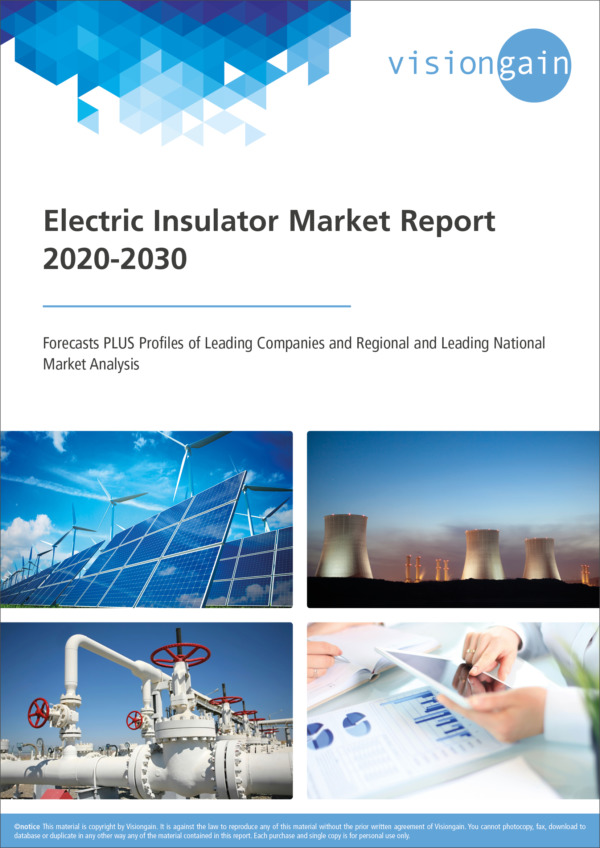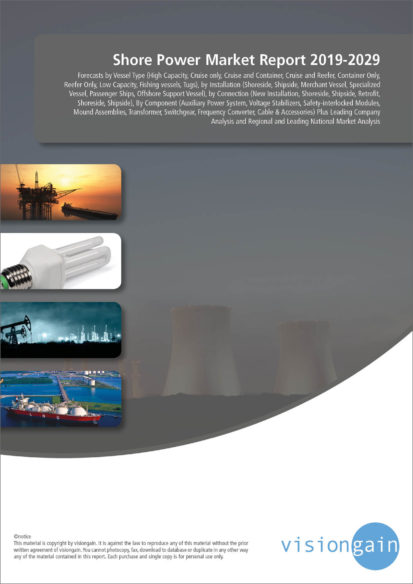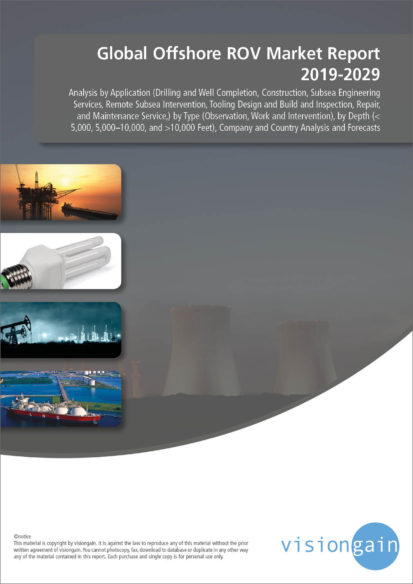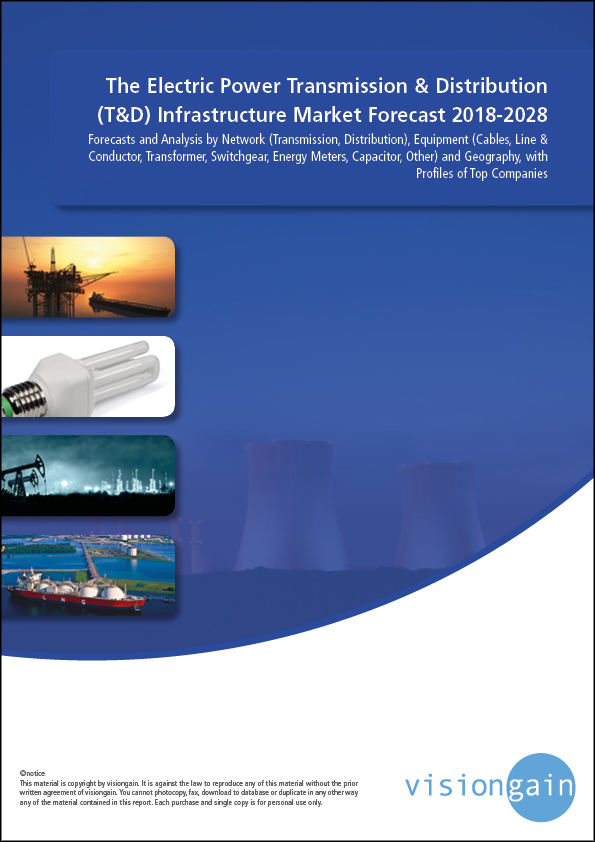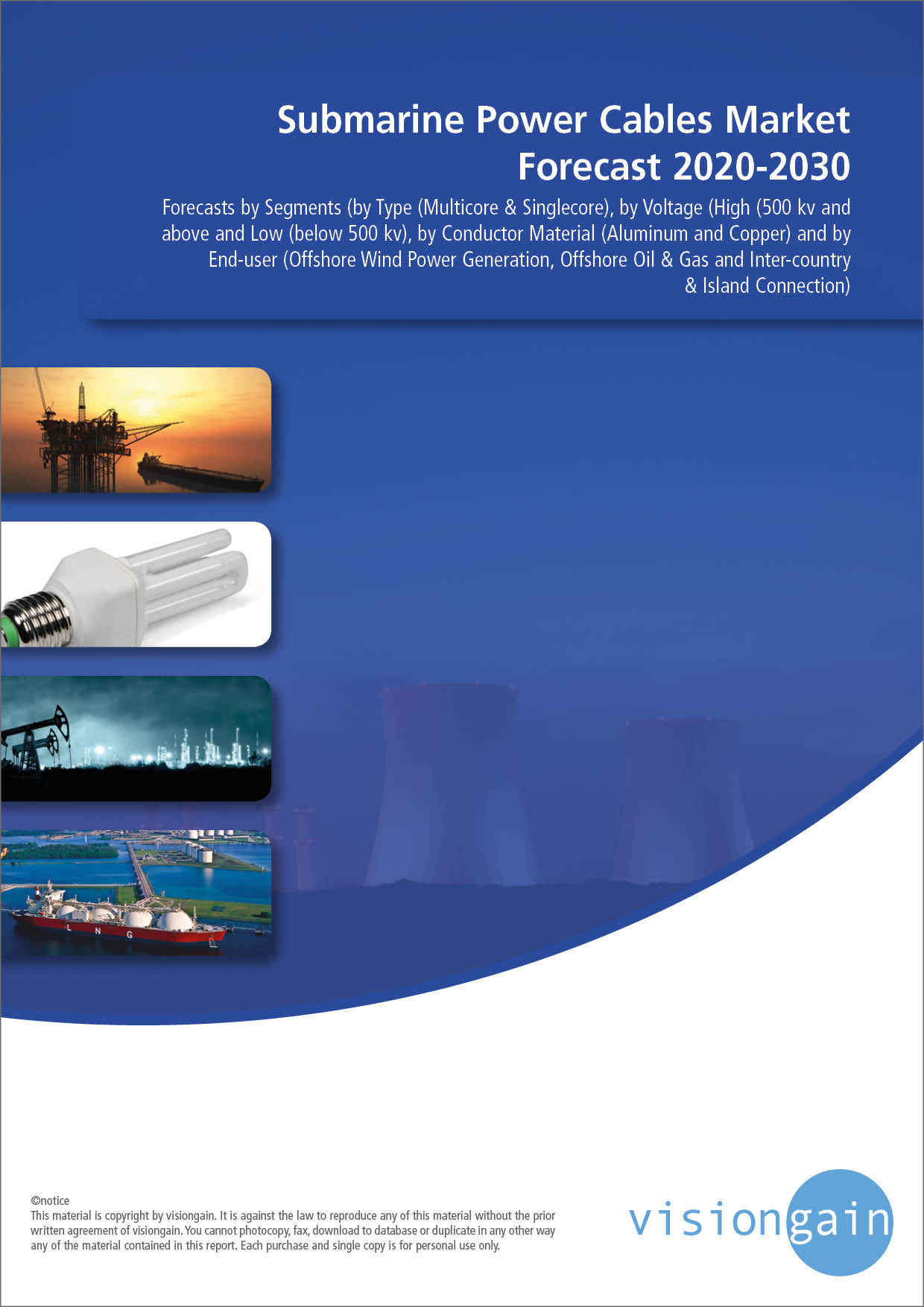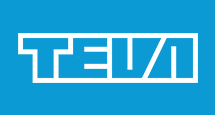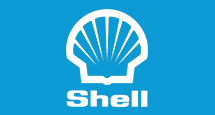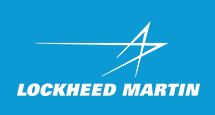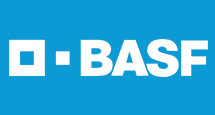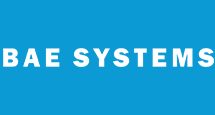Visiongain has forecasted that the global Electric Insulator market will reach to market value of USD xyz billion by 2030, growing at a CAGR of xyz%. This growth can be attributed to the increased availability of renewable energy resources, increased investment in T&D and the renovation of existing global grid networks. However, increasing the quality of low gray products on the market can hamper market growth. Utilities are increasingly upgrading their existing infrastructure, with rapid grid integration of renewables and the distributed technology.
To access the data contained in this document please email contactus@visiongain.com
Growth Factors
50% Increase in World Energy Usage by 2050, Led by Growth in Asia
The world’s energy consumption in the industrial sector is increasing by more than 30% between 2018 and 2050. By 2050, the global consumption of industrial energy reached approximately 315 BTU. The energy consumption of transport increases by almost 40% between 2018 and 2050. This increase is driven mainly by non-OECD countries, which consumed almost 80 percent more energy from 2018 to 2050. Energy in these countries grows considerably faster than in many OECD countries for both personal and freight movement. End-use consumption growth leads to 79 percent increase in electricity generation between 2018 and 2050. The use of electricity in the residential sector is growing as increasing population and living standards in non-OECD countries are increasing demand for equipment. The use of electricity also increases in the transport sector as electric plug-in vehicles enter the floor and electricity for railway applications expands. These factors leads to increasing network of electric transmission and distribution, which in turn is increasing demand for electric insulators.
Government Encouraging the Development of a Sustainable Electricity Grid
The electrical transmission and distribution system together with an integrated and optimized power technology includes power generation, distribution and storage to allow customers to distribute power effectively. Due to the increased requirements for efficient and reliable electricity supply, expansion of the T&D network has increased considerably over the years. It is also complemented by increased government investment and favourable regulations, thus encouraging the development of a sustainable electricity grid, especially in the development countries of Asia and Africa. The growing concern regarding grid stability and supply protection meant that existing grid infrastructure in North America and Europe must be modernised. As a result, the smart grid and substation automation technologies have been rapidly implemented, and demand for advanced and efficient transmission and distribution infrastructure across regions has been growing.
Renewable Energy Adoption Among Consumers Has Increased
Renewable energy adoption among consumers has increased with enhanced developments in energy storage technologies. However, the use of solar panels and batteries is concentrated in small clusters due to their high installation costs and reliability in electricity generation. This led to a low penetration of renewable energy, leading to a high level of dependence on fossil fuels. But as carbon footprints and greenhouse gas emissions are increasingly concerned, combined with national goals for renewable integration, developing and developed economies have increased the use of clean energy to increase the efficiency of electricity generation.
Speedy growth in renewable energy resources used to generate power has also encouraged the development of infrastructure for transmission and substation. Because it can produce only under adequate conditions, and because it is not capable of generating large-scale power compared to traditional sources, renewable energy often can be unfavourable. The introduction of smart grid technology is necessary to control power demand across the entire distribution system to increase the penetration of renewable energy into the energy mix. The implementation of substation automation technologies will allow efficient monitoring and real-time renewable power supply with minimal chances of power outage for electricity consumers.
Restraining Factors
Power Transmission and Distribution Networks Requires Massive Investment
The development of power transmission and distribution networks requires massive government-based and private-sector investments. However, the lack of government assistance in combination with economic slowdown may affect industry growth. Depending on region size and need, the installation of power transmission and distribution systems will cost millions without a new power source being required. Moreover, to achieve the necessary flexibility in available electricity infrastructures, the power grid needs to incorporate several technologies and components. The absence of a viable business model followed by improper regulations and policies has created barriers to commercial and private investment, affecting the expansion of the transmission and distribution network.
Pool of Opportunities in the global market
Decentralizing Projects and Use of New Technologies
Distributed power systems that rely on solar energy and batteries can harden a grid and make it more resilient. Mini-grids and micro grids, because they do not rely on long-distance transmission wires, can provide useful backup generation in case of grid failure. Indeed, most electricity outages result from damage to transmission lines and transformers rather than generation facilities.
Opportunities to Enhance Climate Adaptation Practice
Adaptability and resilience is based on flexibility and novel approaches, not simply on stronger structures. Developing holistic approaches that combine climate adaptation and ecosystem services ensures the resilience of infrastructure and cities, while at the same time restoring valuable environmental parameters that are essential for supporting the existence of thriving societies. An example of how this could work is EU-CIRCLE: their innovative framework to support resilience across European Infrastructure is based on rising climate pressures, and presents findings in a unified manner within a holistic resilience model.
Smart Grid Projects Increased Investment
A smart grid is a sophisticated technology that allows smart devices to monitor standard operations remotely. These devices have two-way technologies of communication which allow the tool to interact with each device and control its operation in order to detect and remove defects. Increasing intelligent city projects globally offers technology firms, service providers, suppliers, and consulting firms an enormous opportunity. Smart cities provide more efficient, intelligent use of technology and proper use of resources to manage major services such as utilities, security, transportation and health. Smart cities will likely depend on intelligent grids for solid energy for key activities and functions. The urbanization rate in the APAC is highest, with smart city technologies being adopted both in developed and developing countries in the region. More investment in smart grid technologies and smart cities, including the automation of the distribution network, electrical equipment and demand response, could open up new opportunities for the electrical insulator market in countries such as Japan, South Korea, and Australia.
Visiongain’s global Electric Insulator market report can keep you informed and up to date with the developments in the market, across four different regions: North America, Europe, Asia-Pacific, Middle East & Africa, and Latin America.
With reference to this report, it details the key investments trend in the global market, subdivided by regions, capital and operational expenditure and project type. Through extensive secondary research and interviews with industry experts, Visiongain has identified a series of market trends that will impact the Electric Insulator market over the forecast timeframe.
The report will answer questions such as:
• How is the electric insulator market evolving?
• What is driving and restraining the electric insulator market?
• How will each electric insulator submarket segment grow over the forecast period and how much revenue will these submarkets account for in 2030?
• How will the market shares for each electric insulator submarket develop from 2020 to 2030?
• What will be the main driver for the overall market from 2020 to 2030?
• Will leading electric insulator markets broadly follow the macroeconomic dynamics, or will individual national markets outperform others?
• How will the market shares of the national markets change by 2030 and which geographical region will lead the market in 2030?
• Who are the leading players and what are their prospects over the forecast period?
• What are the electric transmission & distribution projects for these leading companies?
• How will the industry evolve during the period between 2020 and 2030?
Reasons Why You Must Order and Read This Report Today:
The report provides forecasts for the Global Electric Insulator market, by TYPE, for the period 2020-2030
• Ceramic Based Insulators Market 2020-2030
• Composite Based Insulators Market 2020-2030
• Glass Based Insulators Market 2020-2030
• Other Types Based Insulators Market 2020-2030
The report provides forecasts for the Global Electric Insulator market, by Voltage, for the period 2020-2030
• Low Voltage Insulators Market 2020-2030
• Medium Voltage Insulators Market 2020-2030
• High Voltage Insulators Market 2020-2030
• Other Voltage Insulators Market 2020-2030
The report provides forecasts for the Global Electric Insulator market, by Application, for the period 2020-2030
• Transformer Insulators Market 2020-2030
• Cables Insulators Market 2020-2030
• Switchgear Insulators Market 2020-2030
• Busbar Insulators Market 2020-2030
• Surge Protection Devices Insulators Market 2020-2030
• Other Applications Insulators Market 2020-2030
The report provides forecasts for the Global Electric Insulator market, by End-User, for the period 2020-2030
• Utilities Insulators Market 2020-2030
• Industrial Insulators Market 2020-2030
• Other End-User Insulators Market 2020-2030
The report provides forecasts for the Global Electric Insulator market, by Region, for the period 2020-2030
• North America Insulators Market 2020-2030
• Europe Insulators Market 2020-2030
• Asia-Pacific Insulators Market 2020-2030
• Middle East & Africa Insulators Market 2020-2030
• Latin America Insulators Market 2020-2030
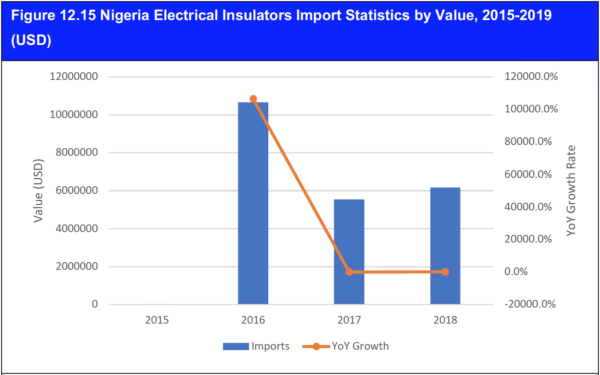
Middle East & Africa electric insulator market was valued at US$xyz billion in 2019 and is anticipated to grow at a CAGR of xyz% from 2020-2030 to reach at market value of US$xyz billion by 2030. The market is anticipated to grow at a CAGR of xyz% in the first half of the forecast period while the second half of the forecast period is anticipated to grow at CAGR of xyz%. Overall Middle East & Africa Electric Insulator market is anticipated to grow at CAGR of xyz% from 2020 to 2030.
To access the data contained in this document please email contactus@visiongain.com
The report reveals global regulations and agreements affecting the Electric T&D Industry.
The report includes Leading Companies analysis in the Electric Insulator Market Companies
• Companies with T&D projects
• Expansion Contractors
• Consultancies
The report provides detailed profiles of the leading companies operating within the Electric Insulator market:
• ABB
• Bharat Heavy Electricals Limited
• DuPont
• General Electric Company
• Hubbell
• K-Line Insulators Limited
• L&T Hydrocarbon Engineering
• Lapp Insulators
• Maclean-Fogg
• NGK Insulators
• PPC Austria Holding GmbH
• Solar Turbines
• Southwire Company
• Subsea 7
• TE Connectivity
• Toshiba
• Vericor Power
This independent 401-page report guarantees you will remain better informed than your competitors. With 287 tables and figures examining the Electric Insulator market space, the report gives you a direct, detailed breakdown of the market. PLUS, Capital expenditure and installed units by Type and by Region, as well as in-depth profiles of Companies that will keep your knowledge that one step ahead of your rivals.
This report is essential reading for you or anyone in the energy sector. Purchasing this report today will help you to recognise those important market opportunities and understand the possibilities there. I look forward to receiving your order.
Buy our report today Electric Insulator Market Report 2020-2030: Forecasts PLUS Profiles of Leading Companies and Regional and Leading National Market Analysis. Avoid missing out by staying informed – order our report now.
Visiongain is a trading partner with the US Federal Government
CCR Ref number: KD4R6
Do you have any custom requirements we can help you with? Any need for specific country, geo region, market segment or specific company information? Contact us today, we can discuss your needs and see how we can help: sara.peerun@visiongain.com
1. Report Overview
1.1 Global Electric Insulator Market Overview
1.2 Market Definition
1.3 Benefits of Insulations
1.3.1. Global Market Size Estimation and Forecast 2020- 2030
1.4 Assumptions for Covid-19 Impact Analysis Study
1.5 Why You Should Read This Report
1.6 How This Report Delivers
1.7 Key Questions Answered by This Analytical Report Include:
1.8 Who is This Report For?
1.9 Methodology
1.9.1 Primary Research
1.9.2 Secondary Research
1.9.3 Market Evaluation & Forecasting Methodology
1.10 Frequently Asked Questions (FAQ)
1.11 Associated Visiongain Reports
1.12 About Visiongain
2. Introduction to Electrical Insulator
2.1 Market Definition
2.1 Historical Development of Insulators
2.2 Basic Design Concepts
2.3 Material Selection Core
2.4 Insulator Design
2.5 Loading Considerations
2.6 Insulation Consideration
2.6.1 Consideration of Interference and Corona Generating Processes
2.6.2 Consideration of Capacitance Effects
2.7 Insulator Testing
2.7.1 Treeing
2.7.2 Erosion
2.7.3 Chalking
2.7.4 Cracking
2.7.5 Puncture
2.7.6 Mechanical Load (S.M.L)
2.7.7 Cantilever Load
2.7.8 Delamination
2.8 Classification of Tests
2.8.1 Design Tests
2.8.2 Type Tests
2.8.3 Sample Tests
3. Market Drivers, Restraints, Opportunities and Challenges
3.1 Market Drivers
3.1.1 50% Increase in World Energy Usage by 2050, Led By Growth in Asia
3.1.2 Government Encouraging the Development of a Sustainable Electricity Grid
3.1.3 Renewable Energy Adoption Among Consumers Has Increased
3.1.4 Customers' Rising Demand for Safe and Permanent Electricity Supplies
3.1.5 Rising Electric Vehicle Adoption Impacts Distribution Load
3.1.6 Existing Grid Network Renovation
3.2 Market Restraint
3.2.1 Power Transmission and Distribution Networks Requires Massive Investment
3.2.2 Low-Quality, Increasing Grey Market
3.3 Challenges in the Market
3.3.1 Infrastructure Disruptions Due to Climate Change Cause Economic Losses to the Nation
3.3.2 Climate Change Impact on Global Energy Sector
3.3.3 Raw Material Price Volatility
3.4 Market Opportunities
3.4.1 Temperature, Energy Demand, and Energy Supply
3.4.2 Decentralizing and Using New Technologies
3.4.3 Funding Opportunities in the Electricity Sector
3.4.4 Opportunities to Enhance Climate Adaptation Practice
3.4.5 Smart Grid Projects Increased Investment
4. Global Electric Insulator Market Outlook
4.1 Global Electric Insulator Market Size in Terms of Value
4.2 Global Electric Insulator Market Size in Terms of Volume
4.3 Regional Electric Insulator Market Size in Terms of Value
4.4 Regional Electric Insulator Market Size in Terms of Volume
4.5 Global Electric Insulator Market by Type
4.6 Global Electric Insulator Market by Application
4.7 Global Electric Insulator Market by Voltage
4.8 Global Electric Insulator Market by End-User
5. Global Electric Insulator Market by Type
5.1 Insulator Materials
5.1.1 Acetate
5.1.2 Acrylic
5.1.3 Beryllium Oxide
5.1.4 Ceramic
5.1.5 Delrin
5.1.6 Epoxy/Fiberglass
5.1.7 Glass
5.1.8 Kapton
5.1.9 Kynar
5.1.10 Lexan and Merlon
5.1.11 Melamine
5.1.13 Neoprene
5.1.14 Nomex
5.1.15 Nylon
5.1.16 P.E.T.
5.1.17 P.E.T.G.
5.1.18 Phenolics
5.1.19 Polyester (Mylar)
5.1.21 Polystyrene
5.1.22 Polyurethane
5.1.23 PVC
5.1.24 Silicone/Fiberglass
5.1.25 Silicone Rubber
5.1.26 TFE (TEFLON)
5.1.27 Thermoplastics
5.2 Global Ceramic Electric Insulator Market by Region
5.3 Global Composite Electric Insulator Market by Region
5.4 Global Glass Electric Insulator Market by Region
5.5 Global Other Type Electric Insulator Market by Region
6. Global Electric Insulator Market by Application
6.1 Global Transformer Electric Insulator Market by Region
6.2 Global Cables Electric Insulator Market by Region
6.3 Global Switchgear Electric Insulator Market by Region
6.4 Global Busbar Electric Insulator Market by Region
6.5 Global Surge Protection Devices Electric Insulator Market by Region
6. 6 Global Other Applications Electric Insulator Market by Region
7. Global Electric Insulator Market by Voltage
7.1 Global Low Voltage Electric Insulator Market by Region
7.2 Global Medium Voltage Electric Insulator Market by Region
7.3 Global High Voltage Electric Insulator Market by Region
7.4 Global Other Voltage Electric Insulator Market by Region
8. Global Electric Insulator Market by End-User
8.1 Global Utilities Electric Insulator Market by Region
8.2 Global Industrial Electric Insulator Market by Region
8.3 Global Other End-User Electric Insulator Market by Region
9. North America Electric Insulator Market Analysis
9.1 North America Electric Insulator Market In Terms of Value
9.2 North America Electric Insulator Market In Terms of Volume
9.3 U.S. Power Sector Overview and Insulator Trade Analysis
9.3.1 U.S. Electricity Production & Consumption, 2016-2019
9.3.2 US Electrical Insulators Export Statistics by Value
9.3.3 US Electrical Insulators Import Statistics by Value
9.4 Canada Power Sector Overview and Insulator Trade Analysis
9.4.1 Canada Electricity Production & Consumption, 2016-2019
9.4.2 Canada Electrical Insulators Export Statistics by Value
9.4.3 Canada Electrical Insulators Import Statistics by Value
9.5 North America Electric Insulator Market by Country
9.6 North America Electric Insulator Market by Type
9.7 North America Electric Insulator Market by Application
9.8 North America Electric Insulator Market by Voltage
9.9 North America Electric Insulator Market by End-User
10. Europe Electric Insulator Market Analysis
10.1 Europe Electric Insulator Market In Terms of Value
10.2 Europe Electric Insulator Market In Terms of Volume
10.3 Russia Electric Sector Overview and Insulator Trade Analysis
10.3.1 Russia Electricity Production & Consumption
10.3.2 Russia Electrical Insulators Export Statistics by Value
10.3.3 Russia Electrical Insulators Import Statistics by Value
10.4 Germany Electric Sector Overview and Insulator Trade Analysis
10.4.1 Germany Electricity Production & Consumption
10.4.2 Germany Electrical Insulators Export Statistics by Value
10.4.3 Germany Electrical Insulators Import Statistics by Value
10.5 France Electric Sector Overview and Insulator Trade Analysis
10.5.1 France Electricity Production & Consumption
10.5.2 France Electrical Insulators Export Statistics by Value
10.5.3 France Electrical Insulators Import Statistics by Value
10.6 U.K. Electric Sector Overview and Insulator Trade Analysis
10.6.1 U.K. Electricity Production & Consumption
10.6.2 U.K. Electrical Insulators Export Statistics by Value
10.6.3 U.K. Electrical Insulators Import Statistics by Value
10.7 Italy Electric Sector Overview and Insulator Trade Analysis
10.7.1 Italy Electricity Production & Consumption
10.7.2 Italy Electrical Insulators Export Statistics by Value
10.7.3 Italy Electrical Insulators Import Statistics by Value
10.8 Europe Electric Insulator Market by Country
10.9 Europe Electric Insulator Market by Type
10.10 Europe Electric Insulator Market by Application
10.11 Europe Electric Insulator Market by Voltage
10.7 Europe Electric Insulator Market by End-User
11. Asia-Pacific Electric Insulator Market Analysis
11.1 Asia-Pacific Electric Insulator Market In Terms of Value
11.2 Asia-Pacific Electric Insulator Market In Terms of Volume
11.3 China Electric Sector Overview and Insulator Trade Analysis
11.3.1 China Electricity Production & Consumption
11.3.2 China Electrical Insulators Export Statistics by Value
11.3.3 China Electrical Insulators Import Statistics by Value
11.4 India Electric Sector Overview and Insulator Trade Analysis
11.4.1 India Electricity Production & Consumption
11.4.2 India Electrical Insulators Export Statistics by Value
11.4.3 India Electrical Insulators Import Statistics by Value
11.5 Indonesia Electric Sector Overview and Insulator Trade Analysis
11.5.1 Indonesia Electricity Production & Consumption
11.5.2 Indonesia Electrical Insulators Export Statistics by Value
11.5.3 Indonesia Electrical Insulators Import Statistics by Value
11.6 Japan Electric Sector Overview and Insulator Trade Analysis
11.6.1 Japan Electricity Production & Consumption
11.6.2 Japan Electrical Insulators Export Statistics by Value
11.6.3 Japan Electrical Insulators Import Statistics by Value
11.7 Australia Electric Sector Overview and Insulator Trade Analysis
11.7.1 Australia Electricity Production & Consumption
11.7.2 Australia Electrical Insulators Export Statistics by Value
11.7.3 Australia Electrical Insulators Import Statistics by Value
11.8 Asia-Pacific Electric Insulator Market by Country
11.9 Asia-Pacific Electric Insulator Market by Type
11.10 Asia-Pacific Electric Insulator Market by Application
11.11 Asia-Pacific Electric Insulator Market by Voltage
11.12 Asia-Pacific Electric Insulator Market by End-User
12. Middle East & Africa Electric Insulator Market Analysis
12.1 Middle East & Africa Electric Insulator Market In Terms of Value
12.2 Middle East & Africa Electric Insulator Market In Terms of Volume
12.3 Saudi Arabia Electric Sector Overview and Insulator Trade Analysis
12.3.1 Saudi Arabia Electricity Production & Consumption
12.3.2 Saudi Arabia Electrical Insulators Export Statistics by Value
12.3.3 Saudi Arabia Electrical Insulators Import Statistics by Value
12.4 Iran Electric Sector Overview and Insulator Trade Analysis
12.4.1 Iran Electricity Production & Consumption
12.4.2 Iran Electrical Insulators Export Statistics by Value
12.4.3 Iran Electrical Insulators Import Statistics by Value
12.5 Turkey Electric Sector Overview and Insulator Trade Analysis
12.5.1 Turkey Electricity Production & Consumption
12.5.2 Turkey Electrical Insulators Export Statistics by Value
12.5.3 Turkey Electrical Insulators Import Statistics by Value
12.6 South Africa Electric Sector Overview and Insulator Trade Analysis
12.6.1 South Africa Electricity Production & Consumption
12.6.2 South Africa Electrical Insulators Export Statistics by Value
12.6.3 South Africa Electrical Insulators Import Statistics by Value
12.7 Egypt Electric Sector Overview and Insulator Trade Analysis
12.7.1 Egypt Electricity Production & Consumption
12.7.2 Egypt Electrical Insulators Export Statistics by Value
12.7.3 Egypt Electrical Insulators Import Statistics by Value
12.8 UAE Electric Sector Overview and Insulator Trade Analysis
12.8.1 UAE Electricity Production & Consumption
12.8.2 UAE Electrical Insulators Export Statistics by Value
12.8.3 UAE Electrical Insulators Import Statistics by Value
12.9 Nigeria Electric Sector Overview and Insulator Trade Analysis
12.9.1 Nigeria Electricity Production & Consumption
12.9.2 Nigeria Electrical Insulators Export Statistics by Value
12.10 Middle East & Africa Electric Insulator Market by Country
12.11 Middle East & Africa Electric Insulator Market by Type
12.12 Middle East & Africa Electric Insulator Market by Application
12.13 Middle East & Africa Electric Insulator Market by Voltage
12.14 Middle East & Africa Electric Insulator Market by End-User
13. Latin America Electric Insulator Market Analysis
13.1 Latin America Electric Insulator Market In Terms of Value
13.2 Latin America Electric Insulator Market In Terms of Volume
13.3 Brazil Electric Sector Overview and Insulator Trade Analysis
13.3.1 Brazil Electricity Production & Consumption
13.3.2 Brazil Electrical Insulators Export Statistics by Value
13.3.3 Brazil Electrical Insulators Import Statistics by Value
13.4 Mexico Electric Sector Overview and Insulator Trade Analysis
13.4.1 Mexico Electricity Production & Consumption
13.4.2 Mexico Electrical Insulators Export Statistics by Value
13.4.3 Mexico Electrical Insulators Import Statistics by Value
13.5 Argentina Electric Sector Overview and Insulator Trade Analysis
13.5.1 Argentina Electricity Production & Consumption
13.5.2 Argentina Electrical Insulators Export Statistics by Value
13.5.3 Argentina Electrical Insulators Import Statistics by Value
13.6 Latin America Electric Insulator Market by Country
13.7 Latin America Electric Insulator Market by Type
13.8 Latin America Electric Insulator Market by Application
13.9 Latin America Electric Insulator Market by Voltage
13.10 Latin America Electric Insulator Market by End-User
14. Insulation Ageing Impact on Electric Insulator Market
14.1 Introduction
14.2 Factors Contributing to Ageing
14.2.1 Thermal Ageing
14.2.2 Electrical Ageing
14.2.3 Mechanical Ageing
14.2.4 Environmental Ageing
14.3 Preventing the Sources of Contamination
14.4 Degradation of Cellulose
14.4.1 Factors Affecting Ageing of Solid Insulation
14.4.2 Thermal Degradation
14.4.3 Oxidative Degradation
14.4.4 Hydrolytic Degradation
14.4.5 Acid
14.4.6 Measures to Minimize Degradation of Cellulose
14.4.7 Influence from Oil
14.4.8 Thermally Upgraded Paper
14.5 Transformer Oil Degradation
14.5.1 Factors Affecting Degradation of Liquid Insulation
14.5.2 Thermal Degradation
14.5.3 Oxidation
14.5.4 Contamination
14.5.5 Partial Discharges
14.5.6 Acid
14.5.7 Undesirable Effects of Moisture in Oil
14.6 Measures to Minimize Oil Degradation
14.6.1 Degradation Products from Cellulosic Insulation Materials
14.6.2 Major Degradation Products of Oil
14.7 Reducing Ageing of Insulation
15. Porter’s Five Forces Analysis
15.1 Competitive Rivalry or Competition (Strong Force)
15.2 Bargaining Power of Electric Company’s Customers/Buyers (Moderate Force)
15.3 Bargaining Power of Suppliers (Moderate Force)
15.4 Threat of Substitutes or Substitution (Weak Force)
15.5 Threat of New Entrants or New Entry (Weak Force)
15. 6 Summary & Recommendations: Five Forces Analysis
16. Leading Company Profiles
16.1 ABB Ltd
16.1.1 Business Overview
16.1.2 ABB Ltd Company Financials
16.1.3 ABB Ltd Company Recent Developments
16.1.5 ABB Ltd Primary Market Competitors 2020
16.2 Bharat Heavy Electricals Limited
16.2.1 Business Overview
16.2.2 Bharat Heavy Electricals Limited Company Financials
16.2.3 Bharat Heavy Electricals Limited Company Recent Developments
16.2.5 Bharat Heavy Electricals Limited Primary Market Competitors 2020
16.3 General Electric Company
16.3.1 Business Overview
16.3.2 General Electric Company Financials
16.3.5 General Electric Primary Market Competitors 2020
16.4 Hubbell
16.4.1 Business Overview
16.4.2 Hubbell Incorporated Company Financials
Strengths of Hubbell – Internal Strategic Factors
16.4.4 Hubbell Incorporated Primary Market Competitors 2020
16.5 DuPont de Nemours, Inc.
16.5.1 Business Overview
16.5.2 DuPont de Nemours, Inc. Company Financials
16.5.3 DuPont de Nemours, Inc. Company Recent Developments
16.5.4 DuPont de Nemours, Inc. Strategic alliances -
16.5.5 DuPont de Nemours, Inc. Primary Market Competitors 2020
16.6 Toshiba
16.6.1 Business Overview
16.6.2 Toshiba Corporation, 2020 Company Financials
16.6.3 Toshiba Corporation Company Recent Developments
16.6.5 Toshiba Primary Market Competitors 2020
16.7 W.S. Industries (India) Ltd
16.7.1 Business Overview
16.7.3 W.S. Industries (India) Ltd Company Financials
16.7.4 W.S. Industries (India) Ltd Primary Market Competitors 2020
16.8 NGK Insulators Ltd
16.8.1 Business Overview
16.8.2 NGK Insulators Ltd Company Financials
16.8.3 NGK Insulators Ltd Recent Developments
16.8.4 NGK Insulators Ltd Business Strategies 2020
16.8.5 NGK Insulators Ltd. Primary Market Competitors 2020
16.9 TE Connectivity Ltd
16.9.1 Business Overview
16.9.2 TE Connectivity Ltd Company Financials
16.9.3 TE Connectivity Ltd. Company Recent Developments
16.9.5 TE Connectivity Ltd Primary Market Competitors 2020
16.10 Subsea 7 SA
16.10.1 Business Overview
16.10.2 Subsea 7 SA Company Financials
16.10.3 Subsea 7 SA Recent Developments
16.10.5 Subsea 7 SA Primary Market Competitors 2020
17. Future Outlook for Electric Insulators
17.1 Benefits on Nanotechnology
17.2 Nanomaterials for High Voltage Transformers
17.3 Nano Fluids
17.4 Nanomaterials for Insulation
17.5 Nanostructured Outdoor Insulators
17.6 Nanoceramic Insulators
17.7 Nano-polymer Insulators
17.8 Metal-Based Nanomaterials and Their Polymer Nanocomposites
18. List Of Major Power Outages
19. Conclusion and Recommendations
19.1 Recommendations
19.2 Future Trends of Nanotechnology in High Voltage Transformers
20. Glossary
Associated Visiongain Reports
Visiongain Report Sales Order Form
List of Tables
Table 1.1 Global Electric Insulator Market Value Forecast 2020-2030 (US$billion, AGR %, CAGR %)
Scenario-A: Table 4.1 Global Electric Insulator Market Value Forecast 2020-2030 (US$billion, AGR %, CAGR %)
Scenario-B: Table 4.2 Global Electric Insulator Market Value Forecast 2020-2030 (US$billion, AGR %, CAGR %)
Scenario-C: Table 4.3 Global Electric Insulator Market Value Forecast 2020-2030 (US$billion, AGR %, CAGR %)
Scenario-A: Table 4.4 Global Electric Insulator Market Volume Forecast 2020-2030 (Million Units, AGR %, CAGR %)
Scenario-B: Table 4.5 Global Electric Insulator Market Volume Forecast 2020-2030 (Million Units, AGR %, CAGR %)
Scenario-C: Table 4.6 Global Electric Insulator Market Volume Forecast 2020-2030 (Million Units, AGR %, CAGR %)
Scenario-A: Table 4.7 Global Electric Insulator Market By Region Forecast 2020-2030 (US$billion, AGR %, CAGR %)
Scenario-B: Table 4.8 Global Electric Insulator Market By Region Forecast 2020-2030 (US$billion, AGR %, CAGR %)
Scenario-C: Table 4.9 Global Electric Insulator Market By Region Forecast 2020-2030 (US$billion, AGR %, CAGR %)
Scenario-A: Table 4.10 Global Electric Insulator Market By Region Forecast 2020-2030 (Million Units, AGR %, CAGR %)
Scenario-B: Table 4.11 Global Electric Insulator Market By Region Forecast 2020-2030 (Million Units, AGR %, CAGR %)
Scenario-C: Table 4.12 Global Electric Insulator Market By Region Forecast 2020-2030 (Million Units, AGR %, CAGR %)
Scenario-A: Table 4.13 Global Electric Insulator Market by Type Forecast 2020-2030 (US$billion, AGR %, CAGR %)
Scenario-B: Table 4.14 Global Electric Insulator Market by Type Forecast 2020-2030 (US$billion, AGR %, CAGR %)
Scenario-C: Table 4.15 Global Electric Insulator Market by Type Forecast 2020-2030 (US$billion, AGR %, CAGR %)
Scenario-A: Table 4.16 Global Electric Insulator Market by Application Forecast 2020-2030 (US$billion, AGR %, CAGR %)
Scenario-B: Table 4.17 Global Electric Insulator Market by Application Forecast 2020-2030 (US$billion, AGR %, CAGR %)
Scenario-C: Table 4.18 Global Electric Insulator Market by Application Forecast 2020-2030 (US$billion, AGR %, CAGR %)
Scenario-A: Table 4.19 Global Electric Insulator Market by Voltage Forecast 2020-2030 (US$billion, AGR %, CAGR %)
Scenario-B: Table 4.20 Global Electric Insulator Market by Voltage Forecast 2020-2030 (US$billion, AGR %, CAGR %)
Scenario-C: Table 4.21 Global Electric Insulator Market by Voltage Forecast 2020-2030 (US$billion, AGR %, CAGR %)
Scenario-A: Table 4.22 Global Electric Insulator Market by End-User Forecast 2020-2030 (US$billion, AGR %, CAGR %)
Scenario-B: Table 4.23 Global Electric Insulator Market by End-User Forecast 2020-2030 (US$billion, AGR %, CAGR %)
Scenario-C: Table 4.24 Global Electric Insulator Market by End-User Forecast 2020-2030 (US$billion, AGR %, CAGR %)
Scenario-A: Table 5.1 Global Ceramic Electric Insulator Market by Region Forecast 2020-2030 (US$billion, AGR %, CAGR %)
Scenario-B: Table 5.2 Global Ceramic Electric Insulator Market by Region Forecast 2020-2030 (US$billion, AGR %, CAGR %)
Scenario-C: Table 5.3 Global Ceramic Electric Insulator Market by Region Forecast 2020-2030 (US$billion, AGR %, CAGR %)
Scenario-A: Table 5.4 Global Composite Electric Insulator Market by Region Forecast 2020-2030 (US$billion, AGR %, CAGR %)
Scenario-B: Table 5.5 Global Composite Electric Insulator Market by Region Forecast 2020-2030 (US$billion, AGR %, CAGR %)
Scenario-C: Table 5.6 Global Composite Electric Insulator Market by Region Forecast 2020-2030 (US$billion, AGR %, CAGR %)
Scenario-A: Table 5.7 Global Glass Electric Insulator Market by Region Forecast 2020-2030 (US$billion, AGR %, CAGR %)
Scenario-B: Table 5.8 Global Glass Electric Insulator Market by Region Forecast 2020-2030 (US$billion, AGR %, CAGR %)
Scenario-C: Table 5.9 Global Glass Electric Insulator Market by Region Forecast 2020-2030 (US$billion, AGR %, CAGR %)
Scenario-A: Table 5.10 Global Other Type Electric Insulator Market by Region Forecast 2020-2030 (US$billion, AGR %, CAGR %)
Scenario-B: Table 5.11 Global Other Type Electric Insulator Market by Region Forecast 2020-2030 (US$billion, AGR %, CAGR %)
Scenario-C: Table 5.12 Global Other Type Electric Insulator Market by Region Forecast 2020-2030 (US$billion, AGR %, CAGR %)
Scenario-A: Table 6.1 Global Transformer Electric Insulator Market by Region Forecast 2020-2030 (US$billion, AGR %, CAGR %)
Scenario-B: Table 6.2 Global Transformer Electric Insulator Market by Region Forecast 2020-2030 (US$billion, AGR %, CAGR %)
Scenario-C: Table 6.3 Global Transformer Electric Insulator Market by Region Forecast 2020-2030 (US$billion, AGR %, CAGR %)
Scenario-A: Table 6.4 Global Cables Electric Insulator Market by Region Forecast 2020-2030 (US$billion, AGR %, CAGR %)
Scenario-B: Table 6.5 Global Cables Electric Insulator Market by Region Forecast 2020-2030 (US$billion, AGR %, CAGR %)
Scenario-C: Table 6.6 Global Cables Electric Insulator Market by Region Forecast 2020-2030 (US$billion, AGR %, CAGR %)
Scenario-A: Table 6.7 Global Switchgear Electric Insulator Market by Region Forecast 2020-2030 (US$billion, AGR %, CAGR %)
Scenario-B: Table 6.8 Global Switchgear Electric Insulator Market by Region Forecast 2020-2030 (US$billion, AGR %, CAGR %)
Scenario-C: Table 6.9 Global Switchgear Electric Insulator Market by Region Forecast 2020-2030 (US$billion, AGR %, CAGR %)
Scenario-A: Table 6.10 Global Busbar Electric Insulator Market by Region Forecast 2020-2030 (US$billion, AGR %, CAGR %)
Scenario-B: Table 6.11 Global Busbar Electric Insulator Market by Region Forecast 2020-2030 (US$billion, AGR %, CAGR %)
Scenario-C: Table 6.12 Global Busbar Electric Insulator Market by Region Forecast 2020-2030 (US$billion, AGR %, CAGR %)
Scenario-A: Table 6.13 Global Surge Protection Devices Electric Insulator Market by Region Forecast 2020-2030 (US$billion, AGR %, CAGR %)
Scenario-B: Table 6.14 Global Surge Protection Devices Electric Insulator Market by Region Forecast 2020-2030 (US$billion, AGR %, CAGR %)
Scenario-C: Table 6.15 Global Surge Protection Devices Electric Insulator Market by Region Forecast 2020-2030 (US$billion, AGR %, CAGR %)
Scenario-A: Table 6.16 Global Other Applications Electric Insulator Market by Region Forecast 2020-2030 (US$billion, AGR %, CAGR %)
Scenario-B: Table 6.17 Global Other Applications Electric Insulator Market by Region Forecast 2020-2030 (US$billion, AGR %, CAGR %)
Scenario-C: Table 6.18 Global Other Applications Electric Insulator Market by Region Forecast 2020-2030 (US$billion, AGR %, CAGR %)
Scenario-A: Table 7.1 Global Low Voltage Electric Insulator Market by Region Forecast 2020-2030 (US$billion, AGR %, CAGR %)
Scenario-B: Table 7.2 Global Low Voltage Electric Insulator Market by Region Forecast 2020-2030 (US$billion, AGR %, CAGR %)
Scenario-C: Table 7.3 Global Low Voltage Electric Insulator Market by Region Forecast 2020-2030 (US$billion, AGR %, CAGR %)
Scenario-A: Table 7.4 Global Medium Voltage Electric Insulator Market by Region Forecast 2020-2030 (US$billion, AGR %, CAGR %)
Scenario-B: Table 7.5 Global Medium Voltage Electric Insulator Market by Region Forecast 2020-2030 (US$billion, AGR %, CAGR %)
Scenario-C: Table 7.6 Global Medium Voltage Electric Insulator Market by Region Forecast 2020-2030 (US$billion, AGR %, CAGR %)
Scenario-A: Table 7.7 Global High Voltage Electric Insulator Market by Region Forecast 2020-2030 (US$billion, AGR %, CAGR %)
Scenario-B: Table 7.8 Global High Voltage Electric Insulator Market by Region Forecast 2020-2030 (US$billion, AGR %, CAGR %)
Scenario-C: Table 7.9 Global High Voltage Electric Insulator Market by Region Forecast 2020-2030 (US$billion, AGR %, CAGR %)
Scenario-A: Table 7.10 Global Other
Voltage Electric Insulator Market by Region Forecast 2020-2030 (US$billion, AGR %, CAGR %)
Scenario-B: Table 7.11 Global Other Voltage Electric Insulator Market by Region Forecast 2020-2030 (US$billion, AGR %, CAGR %)
Scenario-C: Table 7.12 Global Other Voltage Electric Insulator Market by Region Forecast 2020-2030 (US$billion, AGR %, CAGR %)
Scenario-A: Table 8.1 Global Utilities Electric Insulator Market by Region Forecast 2020-2030 (US$billion, AGR %, CAGR %)
Scenario-B: Table 8.2 Global Utilities Electric Insulator Market by Region Forecast 2020-2030 (US$billion, AGR %, CAGR %)
Scenario-C: Table 8.3 Global Utilities Electric Insulator Market by Region Forecast 2020-2030 (US$billion, AGR %, CAGR %)
Scenario-A: Table 8.4 Global Industrial Electric Insulator Market by Region Forecast 2020-2030 (US$billion, AGR %, CAGR %)
Scenario-B: Table 8.5 Global Industrial Electric Insulator Market by Region Forecast 2020-2030 (US$billion, AGR %, CAGR %)
Scenario-C: Table 8.6 Global Industrial Electric Insulator Market by Region Forecast 2020-2030 (US$billion, AGR %, CAGR %)
Scenario-A: Table 8.7 Global Other End-User Electric Insulator Market by Region Forecast 2020-2030 (US$billion, AGR %, CAGR %)
Scenario-B: Table 8.8 Global Other End-User Electric Insulator Market by Region Forecast 2020-2030 (US$billion, AGR %, CAGR %)
Scenario-C: Table 8.9 Global Other End-User Electric Insulator Market by Region Forecast 2020-2030 (US$billion, AGR %, CAGR %)
Scenario-A: Table 9.1 North America Electric Insulator Market by Value Forecast 2020-2030 (US$billion, AGR %, CAGR %)
Scenario-B: Table 9.2 North America Electric Insulator Market by Value Forecast 2020-2030 (US$billion, AGR %, CAGR %)
Scenario-C: Table 9.3 North America Electric Insulator Market by Value Forecast 2020-2030 (US$billion, AGR %, CAGR %)
Scenario-A: Table 9.4 North America Electric Insulator Market by Volume Forecast 2020-2030 (Million Units, AGR %, CAGR %)
Scenario-B: Table 9.5 North America Electric Insulator Market by Volume Forecast 2020-2030 (Million Units, AGR %, CAGR %)
Scenario-C: Table 9.6 North America Electric Insulator Market by Volume Forecast 2020-2030 (Million Units, AGR %, CAGR %)
Table 9.7 U.S. Electricity Production & Consumption, 2016-2019
Table 9.8 Canada Electricity Production & Consumption, 2016-2019
Scenario-A: Table 9.9 North America Electric Insulator Market by Country Forecast 2020-2030 (US$billion, AGR %, CAGR %)
Scenario-B: Table 9.10 North America Electric Insulator Market by Country Forecast 2020-2030 (US$billion, AGR %, CAGR %)
Scenario-C: Table 9.11 North America Electric Insulator Market by Country Forecast 2020-2030 (US$billion, AGR %, CAGR %)
Scenario-A: Table 9.12 North America Electric Insulator Market by Type Forecast 2020-2030 (US$billion, AGR %, CAGR %)
Scenario-B: Table 9.13 North America Electric Insulator Market by Type Forecast 2020-2030 (US$billion, AGR %, CAGR %)
Scenario-C: Table 9.14 North America Electric Insulator Market by Type Forecast 2020-2030 (US$billion, AGR %, CAGR %)
Scenario-A: Table 9.15 North America Electric Insulator Market by Application Forecast 2020-2030 (US$billion, AGR %, CAGR %)
Scenario-B: Table 9.16 North America Electric Insulator Market by Application Forecast 2020-2030 (US$billion, AGR %, CAGR %)
Scenario-C: Table 9.17 North America Electric Insulator Market by Application Forecast 2020-2030 (US$billion, AGR %, CAGR %)
Scenario-A: Table 9.18 North America Electric Insulator Market by Voltage Forecast 2020-2030 (US$billion, AGR %, CAGR %)
Scenario-B: Table 9.19 North America Electric Insulator Market by Voltage Forecast 2020-2030 (US$billion, AGR %, CAGR %)
Scenario-C: Table 9.20 North America Electric Insulator Market by Voltage Forecast 2020-2030 (US$billion, AGR %, CAGR %)
Scenario-A: Table 9.21 North America Electric Insulator Market by End-User Forecast 2020-2030 (US$billion, AGR %, CAGR %)
Scenario-B: Table 9.22 North America Electric Insulator Market by End-User Forecast 2020-2030 (US$billion, AGR %, CAGR %)
Scenario-C: Table 9.23 North America Electric Insulator Market by End-User Forecast 2020-2030 (US$billion, AGR %, CAGR %)
Scenario-A: Table 10.1 Europe Electric Insulator Market by Value Forecast 2020-2030 (US$billion, AGR %, CAGR %)
Scenario-B: Table 10.2 Europe Electric Insulator Market by Value Forecast 2020-2030 (US$billion, AGR %, CAGR %)
Scenario-C: Table 10.3 Europe Electric Insulator Market by Value Forecast 2020-2030 (US$billion, AGR %, CAGR %)
Scenario-A: Table 10.4 Europe Electric Insulator Market by Volume Forecast 2020-2030 (Million Units, AGR %, CAGR %)
Scenario-B: Table 10.5 Europe Electric Insulator Market by Volume Forecast 2020-2030 (Million Units, AGR %, CAGR %)
Scenario-C: Table 10.6 Europe Electric Insulator Market by Volume Forecast 2020-2030 (Million Units, AGR %, CAGR %)
Table 10.7 Russia Electricity Production & Consumption, 2016-2019
Table 10.8 Germany Electricity Production & Consumption, 2016-2019
Table 10.9 Electricity Production & Consumption, 2016-2019
Table 10.10 U.K. Electricity Production & Consumption, 2016-2019
Table 10.11 Italy Electricity Production & Consumption, 2016-2019
Scenario-A: Table 10.12 Europe Electric Insulator Market by Country Forecast 2020-2030 (US$billion, AGR %, CAGR %)
Scenario-B: Table 10.13 Europe Electric Insulator Market by Country Forecast 2020-2030 (US$billion, AGR %, CAGR %)
Scenario-C: Table 10.14 Europe Electric Insulator Market by Country Forecast 2020-2030 (US$billion, AGR %, CAGR %)
Scenario-A: Table 10.15 Europe Electric Insulator Market by Type Forecast 2020-2030 (US$billion, AGR %, CAGR %)
Scenario-B: Table 10.16 Europe Electric Insulator Market by Type Forecast 2020-2030 (US$billion, AGR %, CAGR %)
Scenario-C: Table 10.17 Europe Electric Insulator Market by Type Forecast 2020-2030 (US$billion, AGR %, CAGR %)
Scenario-A: Table 10.18 Europe Electric Insulator Market by Application Forecast 2020-2030 (US$billion, AGR %, CAGR %)
Scenario-B: Table 10.19 Europe Electric Insulator Market by Application Forecast 2020-2030 (US$billion, AGR %, CAGR %)
Scenario-C: Table 10.20 Europe Electric Insulator Market by Application Forecast 2020-2030 (US$billion, AGR %, CAGR %)
Scenario-A: Table 10.21 Europe Electric Insulator Market by Voltage Forecast 2020-2030 (US$billion, AGR %, CAGR %)
Scenario-B: Table 10.22 Europe Electric Insulator Market by Voltage Forecast 2020-2030 (US$billion, AGR %, CAGR %)
Scenario-C: Table 10.23 Europe Electric Insulator Market by Voltage Forecast 2020-2030 (US$billion, AGR %, CAGR %)
Scenario-A: Table 10.24 Europe Electric Insulator Market by End-User Forecast 2020-2030 (US$billion, AGR %, CAGR %)
Scenario-B: Table 10.25 Europe Electric Insulator Market by End-User Forecast 2020-2030 (US$billion, AGR %, CAGR %)
Scenario-C: Table 10.26 Europe Electric Insulator Market by End-User Forecast 2020-2030 (US$billion, AGR %, CAGR %)
Scenario-A: Table 11.1 Asia-Pacific Electric Insulator Market by Value Forecast 2020-2030 (US$billion, AGR %, CAGR %)
Scenario-B: Table 11.2 Asia-Pacific Electric Insulator Market by Value Forecast 2020-2030 (US$billion, AGR %, CAGR %)
Scenario-C: Table 11.3 Asia-Pacific Electric Insulator Market by Value Forecast 2020-2030 (US$billion, AGR %, CAGR %)
Scenario-A: Table 11.4 Asia-Pacific Electric Insulator Market by Volume Forecast 2020-2030 (Million Units, AGR %, CAGR %)
Scenario-B: Table 11.5 Asia-Pacific Electric Insulator Market by Volume Forecast 2020-2030 (Million Units, AGR %, CAGR %)
Scenario-C: Table 11.6 Asia-Pacific Electric Insulator Market by Volume Forecast 2020-2030 (Million Units, AGR %, CAGR %)
Table 11.7 China Electricity Production & Consumption, 2016-2019
Table 11.8 India Electricity Production & Consumption, 2014-2018
Table 11.9 Indonesia Electricity Production & Consumption, 2014-2018
Table 11.10 Japan Electricity Production & Consumption, 2016-2019
Table 11.11 Australia Electricity Production & Consumption, 2016-2019
Scenario-A: Table 11.12 Asia-Pacific Electric Insulator Market by Country Forecast 2020-2030 (US$billion, AGR %, CAGR %)
Scenario-B: Table 11.13 Asia-Pacific Electric Insulator Market by Country Forecast 2020-2030 (US$billion, AGR %, CAGR %)
Scenario-C: Table 11.14 Asia-Pacific Electric Insulator Market by Country Forecast 2020-2030 (US$billion, AGR %, CAGR %)
Scenario-A: Table 11.15 Asia-Pacific Electric Insulator Market by Type Forecast 2020-2030 (US$billion, AGR %, CAGR %)
Scenario-B: Table 11.16 Asia-Pacific Electric Insulator Market by Type Forecast 2020-2030 (US$billion, AGR %, CAGR %)
Scenario-C: Table 11.17 Asia-Pacific Electric Insulator Market by Type Forecast 2020-2030 (US$billion, AGR %, CAGR %)
Scenario-A: Table 11.18 Asia-Pacific Electric Insulator Market by Application Forecast 2020-2030 (US$billion, AGR %, CAGR %)
Scenario-B: Table 11.19 Asia-Pacific Electric Insulator Market by Application Forecast 2020-2030 (US$billion, AGR %, CAGR %)
Scenario-C: Table 11.20 Asia-Pacific Electric Insulator Market by Application Forecast 2020-2030 (US$billion, AGR %, CAGR %)
Scenario-A: Table 11.21 Asia-Pacific Electric Insulator Market by Voltage Forecast 2020-2030 (US$billion, AGR %, CAGR %)
Scenario-B: Table 11.22 Asia-Pacific Electric Insulator Market by Voltage Forecast 2020-2030 (US$billion, AGR %, CAGR %)
Scenario-C: Table 11.23 Asia-Pacific Electric Insulator Market by Voltage Forecast 2020-2030 (US$billion, AGR %, CAGR %)
Scenario-A: Table 11.24 Asia-Pacific Electric Insulator Market by End-User Forecast 2020-2030 (US$billion, AGR %, CAGR %)
Scenario-B: Table 11.25 Asia-Pacific Electric Insulator Market by End-User Forecast 2020-2030 (US$billion, AGR %, CAGR %)
Scenario-C: Table 11.26 Asia-Pacific Electric Insulator Market by End-User Forecast 2020-2030 (US$billion, AGR %, CAGR %)
Scenario-A: Table 12.1 Middle East & Africa Electric Insulator Market by Value Forecast 2020-2030 (US$billion, AGR %, CAGR %)
Scenario-B: Table 12.2 Middle East & Africa Electric Insulator Market by Value Forecast 2020-2030 (US$billion, AGR %, CAGR %)
Scenario-A: Table 12.3 Middle East & Africa Electric Insulator Market by Volume Forecast 2020-2030 (Million Units, AGR %, CAGR %)
Scenario-B: Table 12.4 Middle East & Africa Electric Insulator Market by Volume Forecast 2020-2030 (Million Units, AGR %, CAGR %)
Table 12.5 Saudi Arabia Electricity Production & Consumption, 2016-2019
Table 12.6 Iran Electricity Production & Consumption, 2014-2018
Table 12.7 Turkey Electricity Production & Consumption, 2014-2018
Table 12.8 South Africa Electricity Production & Consumption, 2014-2018
Table 12.9 Egypt Electricity Production & Consumption, 2014-2018
Table 12.10 United Arab Emirates Electricity Production & Consumption, 2014-2018
Table 12.11 Nigeria Electricity Production & Consumption, 2014-2018
Scenario-A: Table 12.12 Middle East & Africa Electric Insulator Market by Country Forecast 2020-2030 (US$billion, AGR %, CAGR %)
Scenario-B: Table 12.13 Middle East & Africa Electric Insulator Market by Country Forecast 2020-2030 (US$billion, AGR %, CAGR %)
Scenario-A: Table 12.14 Middle East & Africa Electric Insulator Market by Type Forecast 2020-2030 (US$billion, AGR %, CAGR %)
Scenario-B: Table 12.15 Middle East & Africa Electric Insulator Market by Type Forecast 2020-2030 (US$billion, AGR %, CAGR %)
Scenario-A: Table 12.16 Middle East & Africa Electric Insulator Market by Application Forecast 2020-2030 (US$billion, AGR %, CAGR %)
Scenario-B: Table 12.17 Middle East & Africa Electric Insulator Market by Application Forecast 2020-2030 (US$billion, AGR %, CAGR %)
Scenario-A: Table 12.18 Middle East & Africa Electric Insulator Market by Voltage Forecast 2020-2030 (US$billion, AGR %, CAGR %)
Scenario-B: Table 12.19 Middle East & Africa Electric Insulator Market by Voltage Forecast 2020-2030 (US$billion, AGR %, CAGR %)
Scenario-A: Table 12.20 Middle East & Africa Electric Insulator Market by End-User Forecast 2020-2030 (US$billion, AGR %, CAGR %)
Scenario-B: Table 12.21 Middle East & Africa Electric Insulator Market by End-User Forecast 2020-2030 (US$billion, AGR %, CAGR %)
Scenario-A: Table 13.1 Latin America Electric Insulator Market by Value Forecast 2020-2030 (US$billion, AGR %, CAGR %)
Scenario-B: Table 13.2 Latin America Electric Insulator Market by Value Forecast 2020-2030 (US$billion, AGR %, CAGR %)
Scenario-C: Table 13.3 Latin America Electric Insulator Market by Value Forecast 2020-2030 (US$billion, AGR %, CAGR %)
Scenario-A: Table 13.4 Latin America Electric Insulator Market by Volume Forecast 2020-2030 (Million Units, AGR %, CAGR %)
Scenario-B: Table 13.5 Latin America Electric Insulator Market by Volume Forecast 2020-2030 (Million Units, AGR %, CAGR %)
Scenario-C: Table 13.6 Latin America Electric Insulator Market by Volume Forecast 2020-2030 (Million Units, AGR %, CAGR %)
Table 13.7 Brazil Electricity Production & Consumption, 2016-2019
Table 13.8 Mexico Electricity Production & Consumption, 2014-2019
Table 13.9 Argentina Electricity Production & Consumption, 2014-2019
Scenario-A: Table 13.10 Latin America Electric Insulator Market by Country Forecast 2020-2030 (US$billion, AGR %, CAGR %)
Scenario-B: Table 13.11 Latin America Electric Insulator Market by Country Forecast 2020-2030 (US$billion, AGR %, CAGR %)
Scenario-C: Table 13.12 Latin America Electric Insulator Market by Country Forecast 2020-2030 (US$billion, AGR %, CAGR %)
Scenario-A: Table 13.13 Latin America Electric Insulator Market by Type Forecast 2020-2030 (US$billion, AGR %, CAGR %)
Scenario-B: Table 13.14 Latin America Electric Insulator Market by Type Forecast 2020-2030 (US$billion, AGR %, CAGR %)
Scenario-C: Table 13.15 Latin America Electric Insulator Market by Type Forecast 2020-2030 (US$billion, AGR %, CAGR %)
Scenario-A: Table 13.16 Latin America Electric Insulator Market by Application Forecast 2020-2030 (US$billion, AGR %, CAGR %)
Scenario-B: Table 13.17 Latin America Electric Insulator Market by Application Forecast 2020-2030 (US$billion, AGR %, CAGR %)
Scenario-C: Table 13.18 Latin America Electric Insulator Market by Application Forecast 2020-2030 (US$billion, AGR %, CAGR %)
Scenario-A: Table 13.19 Latin America Electric Insulator Market by Voltage Forecast 2020-2030 (US$billion, AGR %, CAGR %)
Scenario-B: Table 13.20 Latin America Electric Insulator Market by Voltage Forecast 2020-2030 (US$billion, AGR %, CAGR %)
Scenario-C: Table 13.21 Latin America Electric Insulator Market by Voltage Forecast 2020-2030 (US$billion, AGR %, CAGR %)
Scenario-A: Table 13.22 Latin America Electric Insulator Market by End-User Forecast 2020-2030 (US$billion, AGR %, CAGR %)
Scenario-B: Table 13.23 Latin America Electric Insulator Market by End-User Forecast 2020-2030 (US$billion, AGR %, CAGR %)
Scenario-C: Table 13.24 Latin America Electric Insulator Market by End-User Forecast 2020-2030 (US$billion, AGR %, CAGR %)
Table 16.1 ABB Ltd Profile 2020 (CEO, Total Company Sales US$bn, Net Income US$m, HQ, Founded, No. of Employees, Ticker, Website)
Table 16.2 ABB Ltd Total Company Sales 2015-2019 (US$m, AGR%)
Table 16.3 ABB Ltd Total Operating Income 2015-2019 (US$m)
Table 16.4 ABB Ltd Total Net Income 2015-2019 (US$m, AGR%)
Table 16.5 ABB Ltd Total EBITDA 2015-2019 (US$m, AGR%)
Table 16.6 ABB Ltd Selected Recent Acquisitions, Contracts, New Product Launches, Others (Date, Development Type, Details)
Table 16.7 Bharat Heavy Electricals Limited 2020 (CEO, Total Company Sales US$bn, Net Income US$m, HQ, Founded, No. of Employees, Ticker, Website)
Table 16.8 Bharat Heavy Electricals Limited Total Company Sales 2015-2019 (US$m, AGR%)
Table 16.9 Bharat Heavy Electricals Limited Total Operating Income 2015-2019 (US$m)
Table 16.10 Bharat Heavy Electricals Limited Total Net Income 2015-2019 (US$m, AGR%)
Table 16.11 Bharat Heavy Electricals Limited Total EBITDA 2015-2019 (US$m, AGR%)
Table 16.12 Bharat Heavy Electricals Limited Selected Recent Acquisitions, Contracts, New Product Launches, Others (Date, Development Type, Details)
Table 16.13 General Electric Company Profile 2020 (CEO, Total Company Sales US$bn, Net Income US$m, HQ, Founded, No. of Employees, Ticker, Website)
Table 16.14 General Electric Total Company Sales 2015-2019 (US$m, AGR%)
Table 16.15 General Electric Total Operating Income 2015-2019 (US$m)
Table 16.16 General Electric Total Net Income 2015-2019 (US$m, AGR%)
Table 16.17 General Electric Total EBITDA 2015-2019 (US$m, AGR%)
Table 16.18 General Electric Selected Recent Acquisitions, Contracts, New Product Launches, Others (Date, Development Type, Details)
Table 16.19 Hubbell Profile 2020 (CEO, Total Company Sales US$bn, Net Income US$m, HQ, Founded, No. of Employees, Ticker, Website)
Table 16.20 Hubbell Incorporated Total Company Sales 2015-2019 (US$m, AGR%)
Table 16.21 Hubbell Incorporated Total Operating Income 2015-2019 (US$m)
Table 16.22 Hubbell Incorporated Total Net Income 2015-2019 (US$m, AGR%)
Table 16.23 Hubbell Incorporated Total EBITDA 2015-2019 (US$m, AGR%)
Table 16.24 DuPont de Nemours, In Profile 2020 (CEO, Total Company Sales US$bn, Net Income US$m, HQ, Founded, No. of Employees, Ticker, Website)
Table 16.25 DuPont de Nemours, Inc. Total Company Sales 2015-2019 (US$m, AGR%)
Table 16.26 DuPont de Nemours, Inc. Total Operating Income 2015-2019 (US$m)
Table 16.27 DuPont de Nemours, Inc. Total Net Income 2015-2019 (US$m, AGR%)
Table 16.28 DuPont de Nemours, Inc. Total EBITDA 2015-2019 (US$m, AGR%)
Table 16.29 DuPont de Nemours, Inc. Selected Recent Acquisitions, Contracts, New Product Launches, Others (Date, Development Type, Details)
Table 16.30 Toshiba Profile 2020 (CEO, Total Company Sales US$bn, Net Income US$m, HQ, Founded, No. of Employees, Ticker, Website)
Table 16.31 Toshiba Corporation Total Company Sales 2015-2019 (US$m, AGR%)
Table 16.32 Toshiba Corporation Total Operating Income 2015-2019 (US$m)
Table 16.33 Toshiba Corporation Total Net Income 2015-2019 (US$m, AGR%)
Table 16.34 Toshiba Corporation Total EBITDA 2015-2019 (US$m, AGR%)
Table 16.35 Toshiba Corporation Selected Recent Acquisitions, Contracts, New Product Launches, Others (Date, Development Type, Details)
Table 16.36 W.S. Industries (India) Ltd Profile 2020 (CEO, Total Company Sales US$bn, Net Income US$m, HQ, Founded, No. of Employees, Ticker, Website)
Table 16.37 W.S. Industries (India) Ltd Total Company Sales 2015-2019 (US$m, AGR%)
Table 16.38 W.S. Industries (India) Ltd Total Operating Income 2015-2019 (US$m)
Table 16.39 W.S. Industries (India) Ltd Total Net Income 2015-2019 (US$m, AGR%)
Table 16.40 W.S. Industries (India) Ltd Total EBITDA 2015-2019 (US$m, AGR%)
Table 16.41 NGK Insulators Ltd Profile 2020 (CEO, Total Company Sales US$bn, Net Income US$m, HQ, Founded, No. of Employees, Ticker, Website)
Table 16.42 NGK Insulators Ltd Total Company Sales 2015-2019 (US$m, AGR%)
Table 16.43 NGK Insulators Ltd Total Operating Income 2015-2019 (US$m)
Table 16.44 NGK Insulators Ltd Total Net Income 2015-2019 (US$m, AGR%)
Table 16.45 NGK Insulators Ltd Total EBITDA 2015-2019 (US$m, AGR%)
Table 16.46 NGK Insulators Ltd Selected Recent Acquisitions, Contracts, New Product Launches, Others (Date, Development Type, Details)
Table 16.47 TE Connectivity Ltd Profile 2020 (CEO, Total Company Sales US$bn, Net Income US$m, HQ, Founded, No. of Employees, Ticker, Website)
Table 16.48 TE Connectivity Ltd Total Company Sales 2015-2019 (US$m, AGR%)
Table 16.49 TE Connectivity Ltd Total Operating Income 2015-2019 (US$m)
Table 16.50 TE Connectivity Ltd Total Net Income 2015-2019 (US$m, AGR%)
Table 16.51 TE Connectivity Ltd Total EBITDA 2015-2019 (US$m, AGR%)
Table 16.52 TE Connectivity Ltd. Selected Recent Acquisitions, Contracts, New Product Launches, Others (Date, Development Type, Details)
Table 16.53 Subsea 7 SA Profile 2020 (CEO, Total Company Sales US$bn, Net Income US$m, HQ, Founded, No. of Employees, Ticker, Website)
Table 16.54 Subsea 7 SA Total Company Sales 2015-2019 (US$m, AGR%)
Table 16.55 Subsea 7 SA Total Operating Income 2015-2019 (US$m)
Table 16.56 Subsea 7 SA Total Net Income 2015-2019 (US$m, AGR%)
Table 16.57 Subsea 7 SA Total EBITDA 2015-2019 (US$m, AGR%)
Table 16.58 Subsea 7 SA Selected Recent Acquisitions, Contracts, New Product Launches, Others (Date, Development Type, Details)
Table 17.1 List Of Major Power Outages
List of Figures
Figure 1.1 Global Electric Insulator Market Segmentation
Figure 1.2 Global Electric Insulator Market Value Forecast 2020-2030 (US$billion, AGR %, CAGR %)
Figure 2.1 Pictorial Overview of Types of Insulators Used in Electrical Transmission and Distribution
Figure 3.1 Global Electricity Consumption Forecast Till 2050 (TWh, AGR %)
Scenario-A: Figure 4.1 Global Electric Insulator Market Value Forecast 2020-2030 (US$billion, AGR %, CAGR %)
Scenario-B: Figure 4.2 Global Electric Insulator Market Value Forecast 2020-2030 (US$billion, AGR %, CAGR %)
Scenario-C: Figure 4.3 Global Electric Insulator Market Value Forecast 2020-2030 (US$billion, AGR %, CAGR %)
Scenario-A: Figure 4.4 Global Electric Insulator Market Volume Forecast 2020-2030 (Million Units, AGR %, CAGR %)
Scenario-B: Figure 4.5 Global Electric Insulator Market Volume Forecast 2020-2030 (Million Units, AGR %, CAGR %)
Scenario-C: Figure 4.6 Global Electric Insulator Market Volume Forecast 2020-2030 (Million Units, AGR %, CAGR %)
Scenario-A: Figure 4.7 Global Electric Insulator Market by Region Forecast 2020-2030 (US$billion, AGR %, CAGR %)
Scenario-B: Figure 4.8 Global Electric Insulator Market by Region Forecast 2020-2030 (US$billion, AGR %, CAGR %)
Scenario-A: Figure 4.9 Global Electric Insulator Market by Region Forecast 2020-2030 (Million Units, AGR %, CAGR %)
Scenario-B: Figure 4.10 Global Electric Insulator Market by Region Forecast 2020-2030 (Million Units, AGR %, CAGR %)
Scenario-A: Figure 4.11 Global Electric Insulator Market by Application Forecast 2020-2030 (US$billion, AGR %, CAGR %)
Scenario-A: Figure 4.12 Global Electric Insulator Market by Voltage Forecast 2020-2030 (US$billion, AGR %, CAGR %)
Scenario-A: Figure 4.13 Global Electric Insulator Market by End-User Forecast 2020-2030 (US$billion, AGR %, CAGR %)
Scenario-A: Figure 5.1 Global Electric Insulator Market Share by Type Forecast 2020, 2025, 2030 (%)
Scenario-A: Figure 5.2 Global Ceramic Electric Insulator Market by Region Forecast 2020-2030 (US$billion, AGR %, CAGR %)
Scenario-A: Figure 5.3 Global Composite Electric Insulator Market by Region Forecast 2020-2030 (US$billion, AGR %, CAGR %)
Scenario-A: Figure 5.4 Global Glass Electric Insulator Market by Region Forecast 2020-2030 (US$billion, AGR %, CAGR %)
Scenario-A: Figure 5.5 Global Other Type Electric Insulator Market by Region Forecast 2020-2030 (US$billion, AGR %, CAGR %)
Scenario-A: Figure 6.1 Global Electric Insulator Market Share by Application Forecast 2020, 2025, 2030 (%)
Scenario-A: Figure 6.2 Global Transformer Electric Insulator Market by Region Forecast 2020-2030 (US$billion, AGR %, CAGR %)
Scenario-A: Figure 6.3 Global Cables Electric Insulator Market by Region Forecast 2020-2030 (US$billion, AGR %, CAGR %)
Scenario-A: Figure 6.4 Global Switchgear Electric Insulator Market by Region Forecast 2020-2030 (US$billion, AGR %, CAGR %)
Scenario-A: Figure 6.5 Global Busbar Electric Insulator Market by Region Forecast 2020-2030 (US$billion, AGR %, CAGR %)
Scenario-A: Figure 6.6 Global Surge Protection Devices Electric Insulator Market by Region Forecast 2020-2030 (US$billion, AGR %, CAGR %)
Scenario-A: Figure 6.7 Global Other Applications Electric Insulator Market by Region Forecast 2020-2030 (US$billion, AGR %, CAGR %)
Scenario-A: Figure 7.1 Global Electric Insulator Market Share by Voltage Forecast 2020, 2025, 2030 (%)
Scenario-A: Figure 7.2 Global Low Voltage Electric Insulator Market by Region Forecast 2020-2030 (US$billion, AGR %, CAGR %)
Scenario-A: Figure 7.3 Global Medium Voltage Electric Insulator Market by Region Forecast 2020-2030 (US$billion, AGR %, CAGR %)
Scenario-A: Figure 7.4 Global High Voltage Electric Insulator Market by Region Forecast 2020-2030 (US$billion, AGR %, CAGR %)
Scenario-A: Figure 7.5 Global Other Voltage Electric Insulator Market by Region Forecast 2020-2030 (US$billion, AGR %, CAGR %)
Scenario-A: Figure 8.1 Global Electric Insulator Market Share by End-User Forecast 2020, 2025, 2030 (%)
Scenario-A: Figure 8.2 Global Utilities Electric Insulator Market by Region Forecast 2020-2030 (US$billion, AGR %, CAGR %)
Scenario-A: Figure 8.3 Global Industrial Electric Insulator Market by Region Forecast 2020-2030 (US$billion, AGR %, CAGR %)
Scenario-A: Figure 8.4 Global Other End-User Electric Insulator Market by Region Forecast 2020-2030 (US$billion, AGR %, CAGR %)
Scenario-A: Figure 9.1 North America Electric Insulator Market by Value Forecast 2020-2030 (US$billion, AGR %, CAGR %)
Scenario-A: Figure 9.2 North America Electric Insulator Market by Volume Forecast 2020-2030 (Million Units, AGR %, CAGR %)
Figure 9.3 US Electrical Insulators Export Statistics by Value, 2015-2019 (USD)
Figure 9.4 US Electrical Insulators Import Statistics by Value, 2015-2019 (USD)
Figure 9.5 Canada Electrical Insulators Export Statistics by Value, 2015-2019 (USD)
Figure 9.6 Canada Electrical Insulators Import Statistics by Value, 2015-2019 (USD)
Scenario-A: Figure 9.7 North America Electric Insulator Market Share by Country Forecast 2020, 2025, 2030 (%)
Scenario-A: Figure 9.8 North America Electric Insulator Market by Country Forecast 2020-2030 (US$billion, AGR %, CAGR %)
Scenario-B: Figure 9.9 North America Electric Insulator Market by Country Forecast 2020-2030 (US$billion, AGR %, CAGR %)
Scenario-C: Figure 9.10 North America Electric Insulator Market by Country Forecast 2020-2030 (US$billion, AGR %, CAGR %)
Scenario-A: Figure 9.11 North America Electric Insulator Market by Type Forecast 2020-2030 (US$billion, AGR %, CAGR %)
Scenario-A: Figure 9.12 North America Electric Insulator Market by Application Forecast 2020-2030 (US$billion, AGR %, CAGR %)
Scenario-A: Figure 9.13 North America Electric Insulator Market by Voltage Forecast 2020-2030 (US$billion, AGR %, CAGR %)
Scenario-A: Figure 9.14 North America Electric Insulator Market by End-User Forecast 2020-2030 (US$billion, AGR %, CAGR %)
Scenario-A: Figure 10.1 Europe Electric Insulator Market by Value Forecast 2020-2030 (US$billion, AGR %, CAGR %)
Scenario-A: Figure 10.2 Europe Electric Insulator Market by Volume Forecast 2020-2030 (Million Units, AGR %, CAGR %)
Figure 10.3 Russia Electrical Insulators Export Statistics by Value, 2015-2019 (USD)
Figure 10.4 Russia Electrical Insulators Import Statistics by Value, 2015-2019 (USD)
Figure 10.5 Germany Electrical Insulators Export Statistics by Value, 2015-2019 (USD)
Figure 10.6 Germany Electrical Insulators Import Statistics by Value, 2015-2019 (USD)
Figure 10.7 France Electrical Insulators Export Statistics by Value, 2015-2019 (USD)
Figure 10.8 France Electrical Insulators Import Statistics by Value, 2015-2019 (USD)
Figure 10.9 UK Electrical Insulators Export Statistics by Value, 2015-2019 (USD)
Figure 10.10 UK Electrical Insulators Import Statistics by Value, 2015-2019 (USD)
Figure 10.11 Italy Electrical Insulators Export Statistics by Value, 2015-2019 (USD)
Figure 10.12 Italy Electrical Insulators Import Statistics by Value, 2015-2019 (USD)
Scenario-A: Figure 10.13 Europe Electric Insulator Market Share by Country Forecast 2020, 2025, 2030 (%)
Scenario-A: Figure 10.14 Europe Electric Insulator Market by Country Forecast 2020-2030 (US$billion, AGR %, CAGR %)
Scenario-B: Figure 10.15 Europe Electric Insulator Market by Country Forecast 2020-2030 (US$billion, AGR %, CAGR %)
Scenario-C: Figure 10.16 Europe Electric Insulator Market by Country Forecast 2020-2030 (US$billion, AGR %, CAGR %)
Scenario-A: Figure 10.17 Europe Electric Insulator Market by Type Forecast 2020-2030 (US$billion, AGR %, CAGR %)
Scenario-A: Figure 10.18 Europe Electric Insulator Market by Application Forecast 2020-2030 (US$billion, AGR %, CAGR %)
Scenario-A: Figure 10.19 Europe Electric Insulator Market by Voltage Forecast 2020-2030 (US$billion, AGR %, CAGR %)
Scenario-A: Figure 10.20 Europe Electric Insulator Market by End-User Forecast 2020-2030 (US$billion, AGR %, CAGR %)
Scenario-A: Figure 11.1 Asia-Pacific Electric Insulator Market by Value Forecast 2020-2030 (US$billion, AGR %, CAGR %)
Scenario-A: Figure 11.2 Asia-Pacific Electric Insulator Market by Volume Forecast 2020-2030 (Million Units, AGR %, CAGR %)
Figure 11.3 China Electrical Insulators Export Statistics by Value, 2015-2019 (USD)
Figure 11.4 China Electrical Insulators Import Statistics by Value, 2015-2019 (USD)
Figure 11.5 India Electrical Insulators Export Statistics by Value, 2015-2019 (USD)
Figure 11.6 India Electrical Insulators Import Statistics by Value, 2015-2019 (USD)
Figure 11.7 Indonesia Electrical Insulators Export Statistics by Value, 2015-2019 (USD)
Figure 11.8 Indonesia Electrical Insulators Import Statistics by Value, 2015-2019 (USD)
Figure 11.9 Japan Electrical Insulators Export Statistics by Value, 2015-2019 (USD)
Figure 11.10 Japan Electrical Insulators Import Statistics by Value, 2015-2019 (USD)
Figure 11.11 Australia Electrical Insulators Export Statistics by Value, 2015-2019 (USD)
Figure 11.12 Australia Electrical Insulators Import Statistics by Value, 2015-2019 (USD)
Scenario-A: Figure 11.13 Asia-Pacific Electric Insulator Market Share by Country Forecast 2020, 2025, 2030 (%)
Scenario-A: Figure 11.14 Asia-Pacific Electric Insulator Market by Country Forecast 2020-2030 (US$billion, AGR %, CAGR %)
Scenario-B: Figure 11.15 Asia-Pacific Electric Insulator Market by Country Forecast 2020-2030 (US$billion, AGR %, CAGR %)
Scenario-C: Figure 11.16 Asia-Pacific Electric Insulator Market by Country Forecast 2020-2030 (US$billion, AGR %, CAGR %)
Scenario-A: Figure 11.17 Asia-Pacific Electric Insulator Market by Type Forecast 2020-2030 (US$billion, AGR %, CAGR %)
Scenario-A: Figure 11.18 Asia-Pacific Electric Insulator Market by Application Forecast 2020-2030 (US$billion, AGR %, CAGR %)
Scenario-A: Figure 11.19 Asia-Pacific Electric Insulator Market by Voltage Forecast 2020-2030 (US$billion, AGR %, CAGR %)
Scenario-A: Figure 11.20 Asia-Pacific Electric Insulator Market by End-User Forecast 2020-2030 (US$billion, AGR %, CAGR %)
Scenario-A: Figure 12.1 Middle East & Africa Electric Insulator Market by Value Forecast 2020-2030 (US$billion, AGR %, CAGR %)
Scenario-A: Figure 12.2 Middle East & Africa Electric Insulator Market by Volume Forecast 2020-2030 (Million Units, AGR %, CAGR %)
Figure 12.3 Saudi Arabia Electrical Insulators Export Statistics by Value, 2015-2019 (USD)
Figure 12.4 Saudi Arabia Electrical Insulators Import Statistics by Value, 2015-2019 (USD)
Figure 12.5 Iran Electrical Insulators Export Statistics by Value, 2015-2019 (USD)
Figure 12.6 Iran Electrical Insulators Import Statistics by Value, 2015-2019 (USD)
Figure 12.7 Turkey Electrical Insulators Export Statistics by Value, 2015-2019 (USD)
Figure 12.8 Turkey Electrical Insulators Import Statistics by Value, 2015-2019 (USD)
Figure 12.9 South Africa Electrical Insulators Export Statistics by Value, 2015-2019 (USD)
Figure 12.10 South Africa Electrical Insulators Import Statistics by Value, 2015-2019 (USD)
Figure 12.11 Egypt Electrical Insulators Export Statistics by Value, 2015-2019 (USD)
Figure 12.12 Egypt Electrical Insulators Import Statistics by Value, 2015-2019 (USD)
Figure 12.13 United Arab Emirates Electrical Insulators Export Statistics by Value, 2015-2019 (USD)
Figure 12.14 United Arab Emirates Electrical Insulators Import Statistics by Value, 2015-2019 (USD)
Figure 12.15 Nigeria Electrical Insulators Import Statistics by Value, 2015-2019 (USD)
Scenario-A: Figure 12.16 Middle East & Africa Electric Insulator Market Share by Country Forecast 2020, 2025, 2030 (%)
Scenario-A: Figure 12.17 Middle East & Africa Electric Insulator Market by Country Forecast 2020-2030 (US$billion, AGR %, CAGR %)
Scenario-B: Figure 12.18 Middle East & Africa Electric Insulator Market by Country Forecast 2020-2030 (US$billion, AGR %, CAGR %)
Scenario-A: Figure 12.19 Middle East & Africa Electric Insulator Market by Type Forecast 2020-2030 (US$billion, AGR %, CAGR %)
Scenario-A: Figure 12.20 Middle East & Africa Electric Insulator Market by Application Forecast 2020-2030 (US$billion, AGR %, CAGR %)
Scenario-A: Figure 12.21 Middle East & Africa Electric Insulator Market by Voltage Forecast 2020-2030 (US$billion, AGR %, CAGR %)
Scenario-A: Figure 12.22 Middle East & Africa Electric Insulator Market by End-User Forecast 2020-2030 (US$billion, AGR %, CAGR %)
Scenario-A: Figure 13.1 Latin America Electric Insulator Market by Value Forecast 2020-2030 (US$billion, AGR %, CAGR %)
Scenario-A: Figure 13.2 Latin America Electric Insulator Market by Volume Forecast 2020-2030 (Million Units, AGR %, CAGR %)
Figure 13.3 Brazil Electrical Insulators Export Statistics by Value, 2015-2019 (USD)
Figure 13.4 Brazil Electrical Insulators Import Statistics by Value, 2015-2019 (USD)
Figure 13.5 Mexico Electrical Insulators Export Statistics by Value, 2015-2019 (USD)
Figure 13.6 Mexico Electrical Insulators Import Statistics by Value, 2015-2019 (USD)
Figure 13.7 Argentina Electrical Insulators Export Statistics by Value, 2015-2019 (USD)
Figure 13.8 Argentina Electrical Insulators Import Statistics by Value, 2015-2019 (USD)
Scenario-A: Figure 13.9 Latin America Electric Insulator Market Share by Country Forecast 2020, 2025, 2030 (%)
Scenario-A: Figure 13.10 Latin America Electric Insulator Market by Country Forecast 2020-2030 (US$billion, AGR %, CAGR %)
Scenario-B: Figure 13.11 Latin America Electric Insulator Market by Country Forecast 2020-2030 (US$billion, AGR %, CAGR %)
Scenario-C: Figure 13.12 Latin America Electric Insulator Market by Country Forecast 2020-2030 (US$billion, AGR %, CAGR %)
Scenario-A: Figure 13.13 Latin America Electric Insulator Market by Type Forecast 2020-2030 (US$billion, AGR %, CAGR %)
Scenario-A: Figure 13.14 Latin America Electric Insulator Market by Application Forecast 2020-2030 (US$billion, AGR %, CAGR %)
Scenario-A: Figure 13.15 Latin America Electric Insulator Market by Voltage Forecast 2020-2030 (US$billion, AGR %, CAGR %)
Scenario-A: Figure 13.16 Latin America Electric Insulator Market by End-User Forecast 2020-2030 (US$billion, AGR %, CAGR %)
Figure 16.1 ABB Ltd Total Company Sales 2015-2019 (US$m, AGR%)
Figure 16.2 ABB Ltd Total Operating Income 2015-2019 (US$m)
Figure 16.3 ABB Ltd Total Net Income 2015-2019 (US$m, AGR%)
Figure 16.4 ABB Ltd Total EBITDA 2015-2019 (US$m, AGR%)
Figure 16.5 ABB Ltd Primary Market Competitors 2020
Figure 16.6 Bharat Heavy Electricals Limited Total Company Sales 2015-2019 (US$m, AGR%)
Figure 16.7 Bharat Heavy Electricals Limited Total Operating Income 2015-2019 (US$m)
Figure 16.8 Bharat Heavy Electricals Limited Total Net Income 2015-2019 (US$m, AGR%)
Figure 16.9 Bharat Heavy Electricals Limited Total EBITDA 2015-2019 (US$m, AGR%)
Figure 16.10 Bharat Heavy Electricals Limited Primary Market Competitors 2020
Figure 16.11 General Electric Total Company Sales 2015-2019 (US$m, AGR%)
Figure 16.12 General Electric Total Operating Income 2015-2019 (US$m)
Figure 16.13 General Electric Total Net Income 2015-2019 (US$m, AGR%)
Figure 16.14 General Electric Total EBITDA 2015-2019 (US$m, AGR%)
Figure 16.15 General Electric Primary Market Competitors 2020
Figure 16.16 Hubbell Incorporated Total Company Sales 2015-2019 (US$m, AGR%)
Figure 16.17 Hubbell Incorporated Total Operating Income 2015-2019 (US$m)
Figure 16.18 Hubbell Incorporated Total Net Income 2015-2019 (US$m, AGR%)
Figure 16.19 Hubbell Incorporated Total EBITDA 2015-2019 (US$m, AGR%)
Figure 16.20 Hubbell Primary Market Competitors 2020
Figure 16.21 DuPont de Nemours, Inc. Total Company Sales 2015-2019 (US$m, AGR%)
Figure 16.22 DuPont de Nemours, Inc. Total Operating Income 2015-2019 (US$m)
Figure 16.23 DuPont de Nemours, Inc. Total Net Income 2015-2019 (US$m, AGR%)
Figure 16.24 DuPont de Nemours, Inc. Total EBITDA 2015-2019 (US$m, AGR%)
Figure 16.25 DuPont de Nemours, Inc. Primary Market Competitors 2020
Figure 16.26 Toshiba Corporation Total Company Sales 2015-2019 (US$m, AGR%)
Figure 16.27 Toshiba Corporation Total Operating Income 2015-2019 (US$m)
Figure 16.28 Toshiba Corporation Total Net Income 2015-2019 (US$m, AGR%)
Figure 16.29 Toshiba Corporation Total EBITDA 2015-2019 (US$m, AGR%)
Figure 16.30 Toshiba Corporation Primary Market Competitors 2020
Figure 16.31 W.S. Industries (India) Ltd Total Company Sales 2015-2019 (US$m, AGR%)
Figure 16.32 W.S. Industries (India) Ltd Total Operating Income 2015-2019 (US$m)
Figure 16.33 W.S. Industries (India) Ltd Total Net Income 2015-2019 (US$m, AGR%)
Figure 16.34 W.S. Industries (India) Ltd Total EBITDA 2015-2019 (US$m, AGR%)
Figure 16.35 W.S. Industries (India) Ltd Primary Market Competitors 2020
Figure 16.36 NGK Insulators Ltd Total Company Sales 2015-2019 (US$m, AGR%)
Figure 16.37 NGK Insulators Ltd Total Operating Income 2015-2019 (US$m)
Figure 16.38 NGK Insulators Ltd Total Net Income 2015-2019 (US$m, AGR%)
Figure 16.39 NGK Insulators Ltd Total EBITDA 2015-2019 (US$m, AGR%)
Figure 16.40 NGK Insulators Ltd. Primary Market Competitors 2020
Figure 16.41 TE Connectivity Ltd Total Company Sales 2015-2019 (US$m, AGR%)
Figure 16.42 TE Connectivity Ltd Total Operating Income 2015-2019 (US$m)
Figure 16.43 TE Connectivity Ltd Total Net Income 2015-2019 (US$m, AGR%)
Figure 16.44 TE Connectivity Ltd Total EBITDA 2015-2019 (US$m, AGR%)
Figure 16.45 TE Connectivity Ltd Primary Market Competitors 2020
Figure 16.46 Subsea 7 SA Total Company Sales 2015-2019 (US$m, AGR%)
Figure 16.47 Subsea 7 SA Total Operating Income 2015-2019 (US$m)
Figure 16.48 Subsea 7 SA Total Net Income 2015-2019 (US$m, AGR%)
Figure 16.49 Subsea 7 SA Total EBITDA 2015-2019 (US$m, AGR%)
Figure 16.50 Subsea 7 SA Primary Market Competitors 2020

